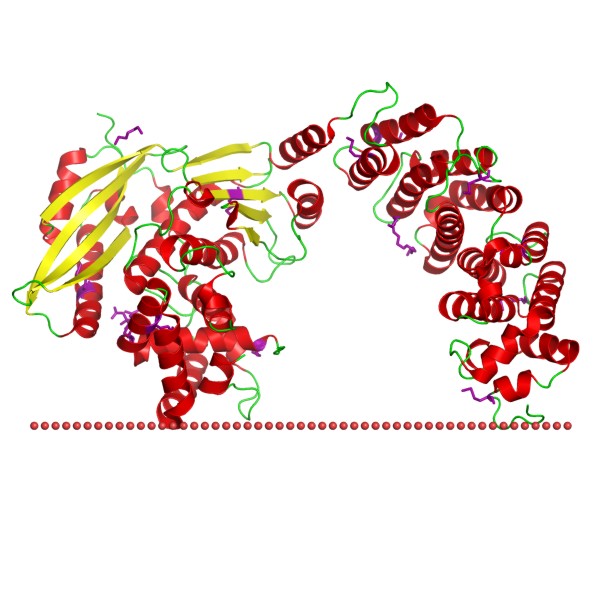Mempro™ PGBD-Like Superfamily Protein Production Using Virus-Like Particles
With the most advanced membrane protein production platform and years of experience in the field of recombinant membrane protein production, Creative Biostructure now can provide Mempro™ PGBD-like superfamily protein production using virus-like particles for both academic and industrial applications.
The PGBD-like superfamily is further catalogued into two families: the peptidoglycan binding domain (PGBD) family and the MMP N-terminal domain family (source from SCOP database). Members of PGBD family are N-acetylmuramoyl-L-alanine amidase YbjR (C-terminal domain) and Zn2+ DD-carboxypeptidase (N-terminal domain). The MMP N-terminal domain family contains Fibroblast collagenase (MMP-1), Gelatinase A (MMP-2), Gelatinase B (MMP-9) and Stromelysin-1 (MMP-3). These member proteins or domains have a common activity of binding the peptidoglycan and a similar core structure construction. Structurally similar PGBD-like domains have been identified in many eukaryotic enzymes.
 Figure 1. Structure of Clostridium histolyticum Collagenase. (OPM)
Figure 1. Structure of Clostridium histolyticum Collagenase. (OPM)
Creative Biostructure provides the most advanced custom Mempro™ PGBD-like superfamily protein production service using virus-like particles (VLPs). With state-of-art VLPs production platforms, our science team has developed multiple VLPs production systems including bacteria, yeasts, green plants, insect cells, mammalian cells. We will develop unique strategy according to the characteristics of the target protein and your special requirements in each individual case.
VLPs can be identified as "empty shells" of virus, they are highly organized subunits result in the self-assembly of viral structural protein. VLPs can mimic the native virus in many ways, but all of them are non-infectious since they don't have any viral DNAs or RNAs. Many virus families have been used for the production of VLPs such as bacteriophages, Parvoviridae, Retroviridae, etc. VLPs have been applied in various research programs such as vaccine development, antigen delivery, heterologous epitope presentation and recombinant protein production. VLPs are powerful tools in the production of recombinant membrane protein. We can achieve detergent free and mechanical disruption free isolation by using VLPs techniques.
Creative Biostructure will perform the co-expression of target PGBD-like proteins and the chosen viral core structural protein in the host cells. The expressed viral structural core protein will achieve the self-assembly at the plasma membrane to form the VLPs. The VLPs will then bud-off from the plasma membrane to form the lipoparticles and capture the target PGBD-like protein at the same time. The specific lipoparticles (VLPs that that contain high concentration of specific membrane proteins within their construction) can be harvested at the surface of host cells with the target PGBD-like protein within its construction. The whole process is free from any mechanical disruptions and detergents to retain the native structure and orientation of target PGBD-like proteins.
Creative Biostructure also provides other Mempro™ membrane protein production service with various advanced techniques. Welcome to contact us for more details.
Reference:
Dideberg, O., Charlier, P., Dive, G., Joris, B., Frère, J.-M., & Ghuysen, J.-M. (1982). Structure of a Zn2+-containing D-alanyl-D-alanine-cleaving carboxypeptidase at 2.5 A resolution. Nature, 299, 469-470.
A.Roldão, et al. Virus-like particles in vaccine development.Expert Rev. Vaccines, 2010,9(10): 1149-1176.
Feussner I, Wasternack C. The lipoxygenase pathway [J]. Annual review of plant biology, 2002, 53(1): 275-297.